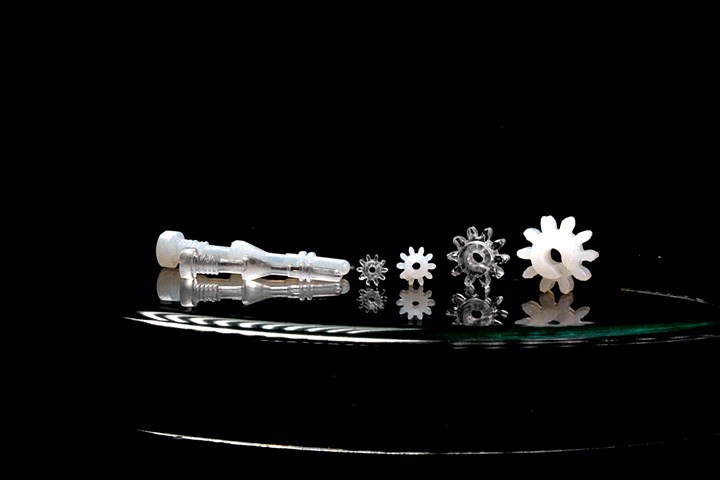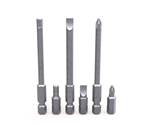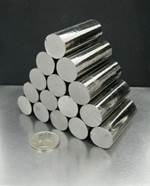Injection Moldable Glass Developed
Glassomer silica nanocomposite can be molded at 130 C with a secondary heat treatment resulting in pure quartz glass molded parts.
Researchers at the University of Freiburg, in collaboration with a local startup, say they have developed an injection moldable glass. Professor Bastian E. Rapp from the university’s Laboratory of Process Technology in the Department of Microsystems Engineering teamed with the Freiburg-based start-up Glassomer to develop what they call a special granulate that allows glass to be injection molded at just 130 C.
The injection molded components are converted into glass in a heat treatment process that results is pure quartz glass. That conversion takes place at 1300 C, well below the normal melt temperature for silica—around 2000 C—resulting in considerable energy savings. The researchers say the process requires less energy than conventional glass melting and says the final components have a high surface quality, eliminating any need for post-treatment steps like polishing.
The researchers said applications for Glassomer’s glass injection molding technology could range from data technology, optics and solar technology to lab-on-a-chip and medical products. The material’s transparency and low coefficient of expansion create more opportunities, and the researchers note that sensors and optics made from glass can work reliably at any temperature.
On Glassomer’s website, the company describes its materials as a silica nanocomposite that comes as a solid or a liquid. As a liquid the company says Glassomer can be processed at room temperature using stereolithography 3D printing. As a solid Glassomer can be formed using traditional subtractive techniques like drilling and machining. Beyond that, Glassomer said its material could be processed nanoimprinting, thermoforming or high-throughput roll-to-roll replication. With the new granulate, add injection molding to the list.

Researchers have created a silica composite that can be injection molded, creating pure quartz glass parts after a heat treatment.
Related Content
-
Is There a More Accurate Means to Calculate Tonnage?
Molders have long used the projected area of the parts and runner to guesstimate how much tonnage is required to mold a part without flash, but there’s a more precise methodology.
-
Process Monitoring or Production Monitoring — Why Not Both?
Molders looking to both monitor an injection molding process effectively and manage production can definitely do both with tools available today, but the question is how best to tackle these twin challenges.
-
Optimizing Pack & Hold Times for Hot-Runner & Valve-Gated Molds
Using scientific procedures will help you put an end to all that time-consuming trial and error. Part 1 of 2.


